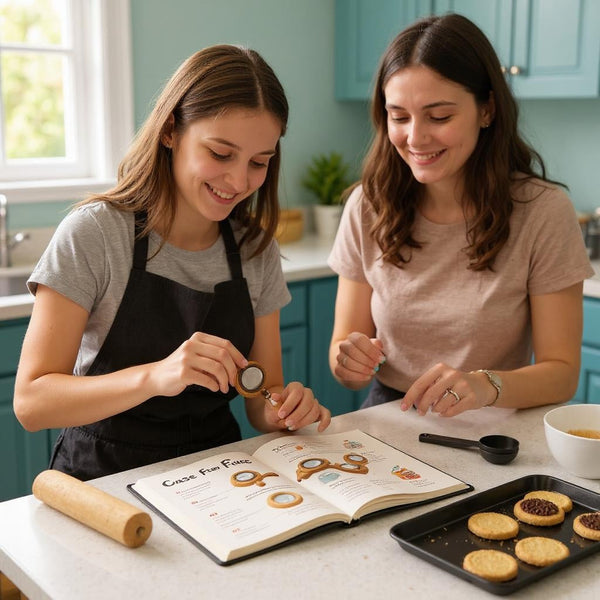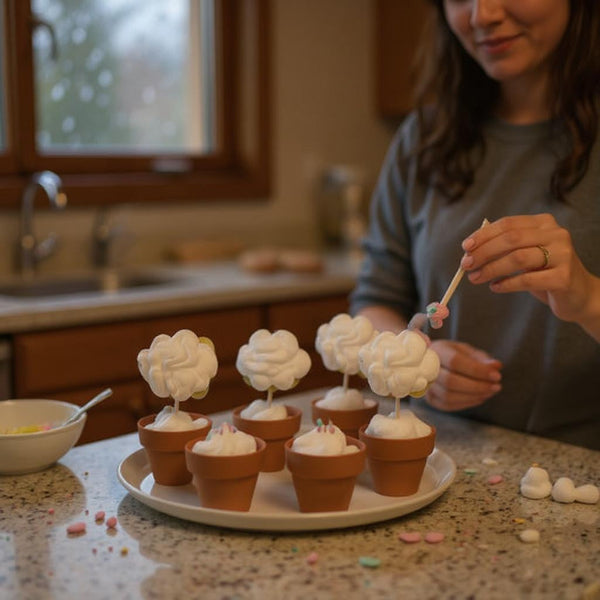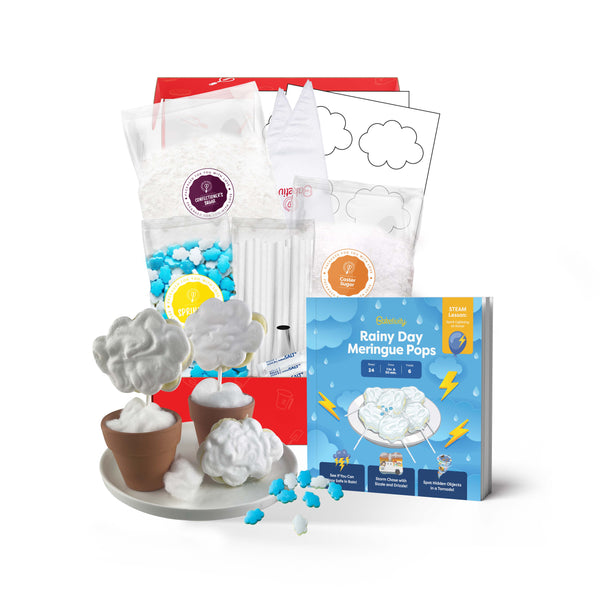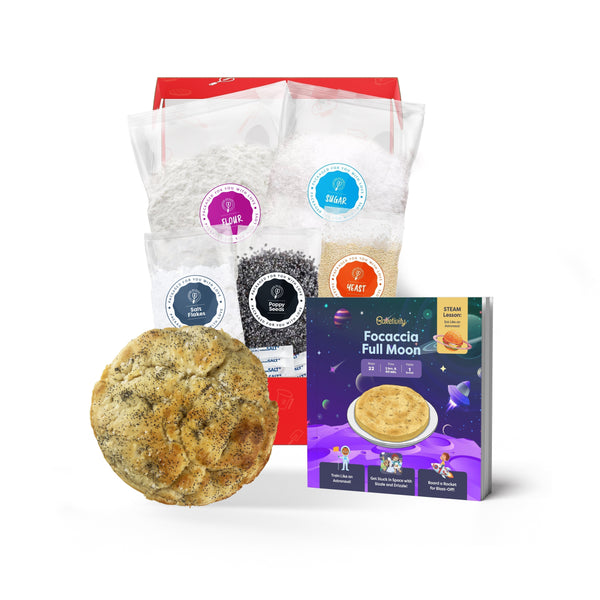Cooking education is a valuable and practical component of any homeschooling curriculum. By teaching children how to cook, you are equipping them with essential life skills while fostering a love and appreciation for food. In this comprehensive guide, we will explore the importance of
cooking education, the benefits of integrating cooking into homeschooling, how to build a homeschooling cooking curriculum,
essential cooking techniques for every age, safety measures in the kitchen, and evaluating progress and mastery.
Understanding the Importance of Cooking Education
Cooking education goes beyond simply preparing meals. It plays a crucial role in the overall development of children, providing them with a wide range of educational and practical benefits.
The Role of Cooking in Child Development
Cooking engages children in a multi-sensory experience that enhances their cognitive and physical development. It promotes creativity,
problem-solving skills, and improves hand-eye coordination. By involving children in the cooking process, they learn to follow instructions, measure ingredients, and practice patience. Additionally, cooking allows children to explore new flavors, develop their palate, and gain an appreciation for different cultures and cuisines.
Moreover, cooking can be a bonding experience for families, creating lasting memories and traditions. It provides a platform for intergenerational knowledge transfer, where family recipes are passed down, preserving culinary heritage. The act of cooking together fosters communication, teamwork, and cooperation among family members, strengthening relationships and building a sense of unity.
Benefits of Integrating Cooking into Homeschooling
Integrating cooking into your homeschooling curriculum offers numerous advantages. It creates opportunities for
cross-curricular learning, incorporating subjects such as math, science, reading, and nutrition. Cooking also encourages teamwork and fosters a sense of accomplishment as children see the tangible results of their efforts. Furthermore, it promotes healthy eating habits and empowers children to make informed choices about the food they consume.
Additionally, cooking can serve as a gateway to exploring various cultures and traditions around the world. Through preparing international dishes, children can learn about geography, history, and social customs, broadening their global awareness. This exposure to diverse culinary practices instills respect for cultural differences and nurtures a sense of curiosity about the world beyond their immediate surroundings.
Building Your Homeschooling Cooking Curriculum
When embarking on the journey of creating a homeschooling cooking curriculum, there are several key factors to consider in order to ensure a well-rounded and enriching experience for your child. In addition to the fundamental aspects of age-appropriate cooking skills, nutrition education, and engaging cooking lessons, it is also beneficial to delve into the cultural and historical significance of various cuisines. By exploring the origins of different dishes and the traditions surrounding them, children can develop a deeper appreciation for the culinary arts.
Furthermore, incorporating elements of food sustainability and ethical eating practices can instill values of environmental consciousness and social responsibility in young learners. Discussing topics such as locally sourced ingredients, seasonal cooking, and reducing food waste can empower children to make informed choices that benefit both their health and the planet.
Identifying Age-Appropriate Cooking Skills
As children progress in their culinary journey, it is important to not only focus on technical skills but also emphasize the importance of kitchen safety and hygiene. Teaching proper knife handling techniques, stove etiquette, and food storage practices ensures that children develop good habits that will serve them well in their future cooking endeavors.
Incorporating Nutrition Education
Delving deeper into nutrition education can involve exploring topics such as the science behind food preparation, the role of vitamins and minerals in the body, and the cultural significance of certain ingredients. By broadening the scope of nutritional knowledge, children can make connections between what they eat and how it impacts their overall health and well-being.
Planning Your Cooking Lessons
While planning engaging cooking lessons, consider incorporating elements of creativity and personal expression. Encourage children to experiment with flavors, create their own recipes, and document their culinary adventures through food journals or blogs. By fostering a sense of creativity in the kitchen, children can develop a lifelong passion for cooking and a sense of pride in their culinary creations.
Essential Cooking Techniques for Every Age
Learning essential cooking techniques enables children to become confident and creative in the kitchen. Cooking is not just a valuable life skill but also a form of self-expression and creativity.
Understanding the basics of cooking can empower individuals to make healthier food choices, experiment with different cuisines, and share delicious meals with loved ones. By mastering fundamental techniques, individuals can unleash their culinary potential and embark on a lifelong journey of gastronomic exploration.
Basic Skills for Young Learners
Young children can develop fundamental cooking skills such as mixing, pouring, stirring, and kneading. These skills lay the foundation for more complex techniques as they grow older. In addition to honing their motor skills, children can also learn about the importance of kitchen safety, cleanliness, and teamwork when cooking with others.
Intermediate Techniques for Older Children
As children mature, they can expand their culinary repertoire by learning knife skills, basic baking techniques, and experimenting with flavors and seasonings. This stage of culinary development allows older children to gain confidence in the kitchen, explore their taste preferences, and start creating simple yet delicious meals for themselves and their families.
Advanced Cooking Skills for Teens
Teenagers can further hone their skills by tackling more challenging recipes, mastering various cooking methods, and developing their own signature dishes. Encourage them to explore advanced techniques such as braising, grilling, and making homemade pasta. By delving into the intricacies of cooking, teens can not only impress others with their culinary creations but also foster a deep appreciation for the art of gastronomy.
Safety Measures in the Kitchen
Implementing safety measures in the kitchen is of utmost importance to protect children from accidents and injuries. The kitchen can be a fun and educational place for children to learn about food and cooking, but it is essential to create a safe environment for them to explore.
One important safety measure in the kitchen is to ensure that children are always supervised by an adult when handling kitchen tools and appliances. This supervision can help prevent accidents and teach children proper techniques for using various kitchen items.
Basic Kitchen Safety Rules
Teach children about
basic kitchen safety rules such as washing hands before and after handling food, using oven mitts, and being cautious around hot surfaces. It is also crucial to educate children about the dangers of cross-contamination and the importance of keeping raw and cooked foods separate to prevent foodborne illnesses.
Handling Kitchen Tools and Appliances Safely
Show children how to handle kitchen tools and appliances safely. Demonstrate proper knife handling techniques, emphasize the importance of using suitable cookware, and teach them to operate appliances with caution. Additionally, teach children about the potential hazards of sharp objects and electrical appliances to instill a sense of awareness and responsibility when using these items.
Evaluating Progress and Mastery
Providing opportunities for children to set achievable cooking goals, assess their skill development, and track their progress is essential to evaluate their mastery in the kitchen.
Setting Achievable Cooking Goals
Help your child set specific cooking goals based on their interests and skill level. These goals can include mastering a particular recipe, experimenting with new ingredients, or successfully hosting a family cooking night.
Assessing Skill Development and Progress
Regularly assess your child's skill development and progress in the kitchen, offering constructive feedback and encouragement. Allow them to reflect on their achievements and areas for growth, empowering them to become independent and confident young chefs.
By implementing a comprehensive cooking curriculum into your homeschooling program, you are providing your children with valuable life skills, nurturing their personal growth, and fostering a lifelong love for cooking. Remember that cooking is not only about the end result but also the journey of exploration, learning, and creating lasting memories together.
Start Your Family Baking Adventure with Baketivity!
Ready to turn your kitchen into a fun and educational bakery? Join the Baketivity Baking Club and embark on a delightful journey of family bonding, creativity, and learning. Our baking kits, infused with quality ingredients and the joy of discovery, are designed to provide you with everything you need to create lasting memories. Embrace the art of baking and nurture your child's culinary talents today.
Join the Baking Club and let's bake up some fun!




